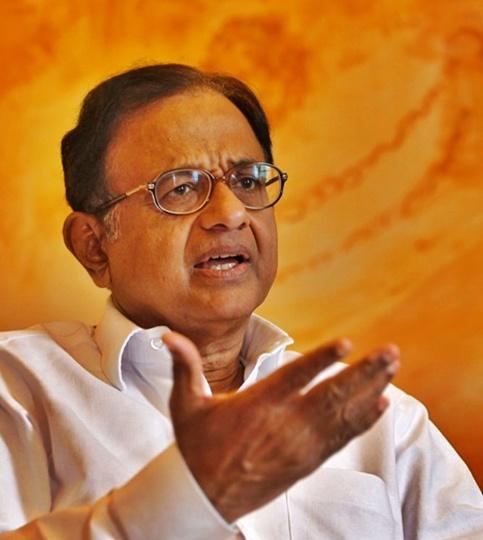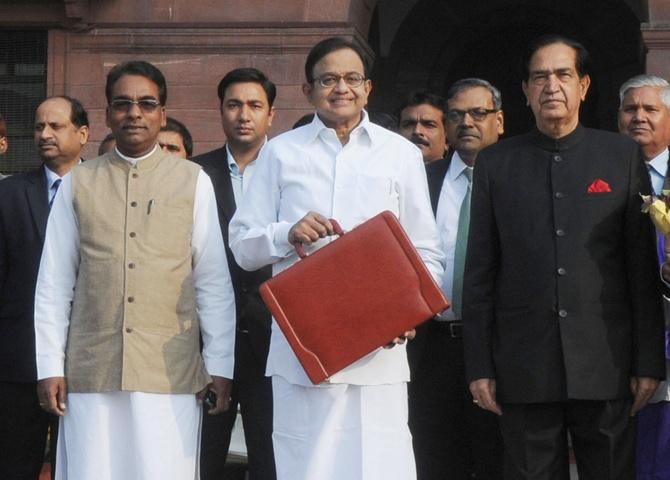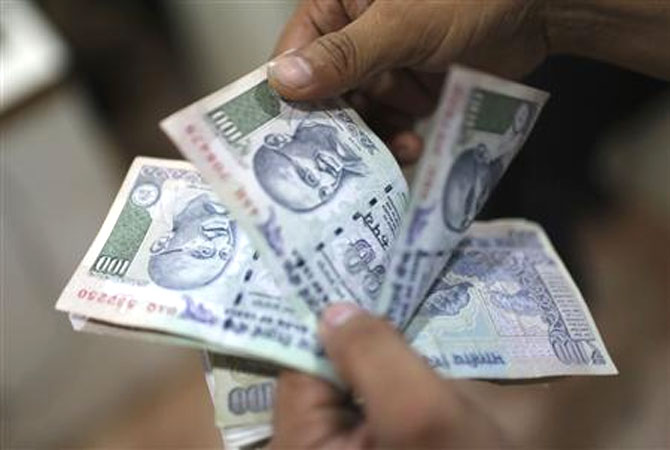
Given the difficult circumstances, it has to be acknowledged that Chidambaram steered the Indian economy towards the relative calm that it enjoys today.
Almost two years ago on July 31, 2012, P Chidambaram was appointed Union finance minister.
In Mr Chidambaram's third stint as finance minister, which lasted till his government was voted out in May this year, he had a fairly pressing crisis to deal with.
There were many things that he left undone, and he failed to address the crisis of credibility that had overcome the United Progressive Alliance (UPA) when it came to economic matters.
However, it can be seen with the benefit of hindsight - and now that the successor government has scrutinised his numbers and not found them wanting - that Mr Chidambaram's tenure must be considered a qualified success.
He had a set of difficult problems to deal with. Growth was collapsing; consumer price inflation was running at 10 per cent year-on-year as he took over; and the external account was about to be rocked with news that the United States Federal Reserve would begin to taper its purchases of bonds.
Please click NEXT to readd more...

Given these circumstances, it has to be acknowledged that Mr Chidambaram steered the Indian economy towards the relative calm that it enjoys today.
The three headline numbers by which a finance minister must be judged are the fiscal deficit, the current-account deficit (CAD) and the inflation rate.
In many ways, it was on the fiscal deficit that the most questions were asked even as Mr Chidambaram handed over his office to Arun Jaitley.
It was assumed that he had left a minefield for his successor to negotiate, and that the fiscal deficit target of 4.1 per cent of gross domestic product (GDP) he had laid out in the interim Budget in February was premised on some juggling of the numbers.
...

Now that Mr Jaitley has presented the full-year Budget, it appears that Mr Chidambaram's target is not too far off the mark. In this very public vote of confidence in Mr Chidambaram's budgeting, Mr Jaitley has taken the first step towards rehabilitating his predecessor.
On the other major deficit figure, during Mr Chidambaram's months as finance minister, the current account came under major stress; and he took unconventional measures, including restrictions on gold imports, to reduce the pressure. The current government has persisted with these measures.
They will have to be withdrawn at some point; but it is difficult to deny that, as firefighting methods go, they have been effective.
India's CAD averaged around 4.5 per cent of GDP during 2011-13. It has been brought down now to below two per cent of GDP, and no longer raises eyebrows on trading floors.
...

Finally, when it comes to consumer price inflation, it must be noted that the month after Mr Chidambaram left office, it fell to 7.3 per cent year-on-year, a 30-month low.
Even growth, which Mr Chidambaram failed to protect while fending off an external crisis, showed signs of hope with May industrial production growing for the second consecutive month - and at 4.7 per cent, a 19-month high.
Mr Chidambaram went slow on reform, and failed to reverse the bad vibes that UPA-II gave taxpayers and investors.
But legitimate criticism must also deal with the numbers. The eventual turnaround at the end of his tenure, and the circumstances in which it occurred, suggest his efforts should be applauded.